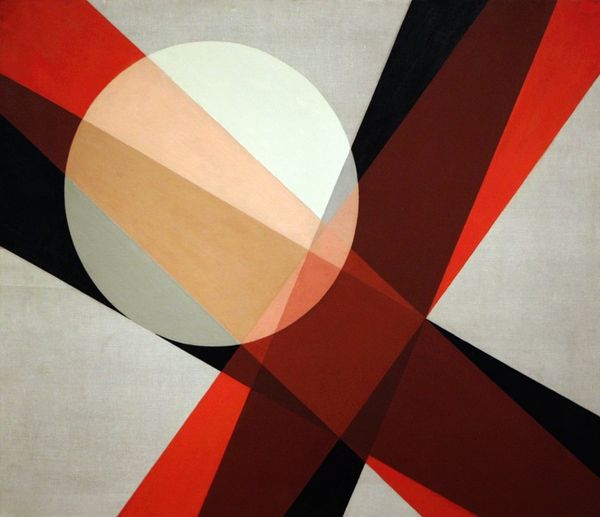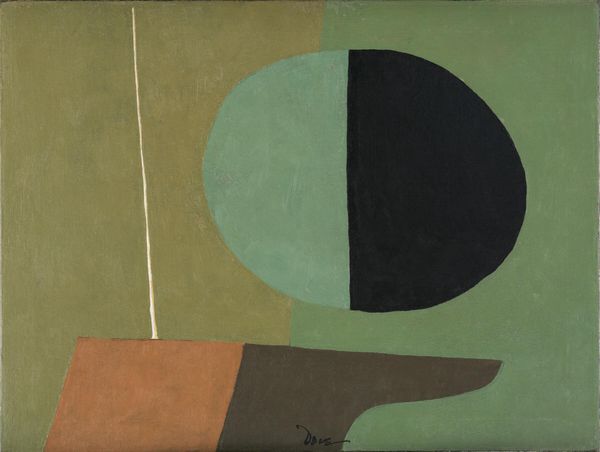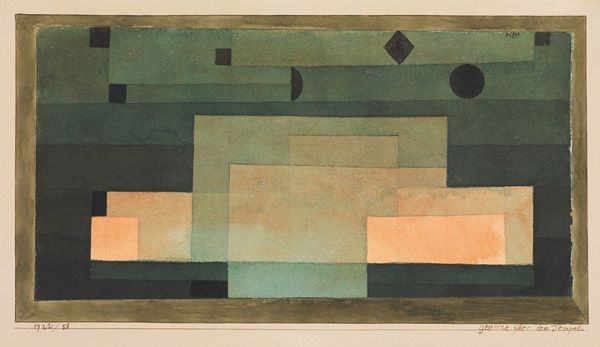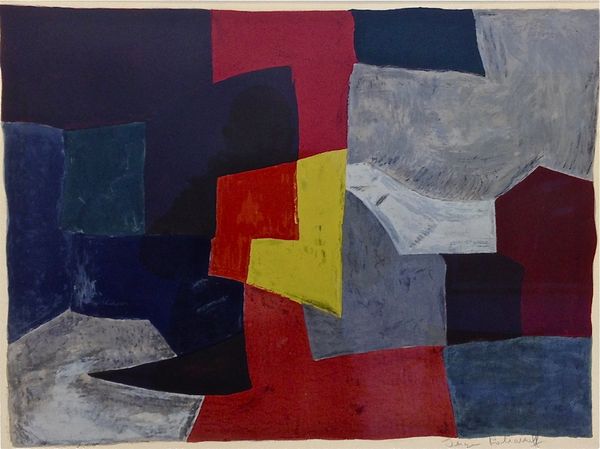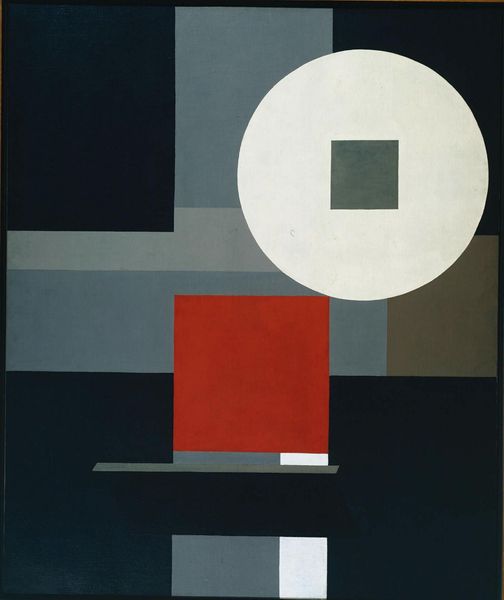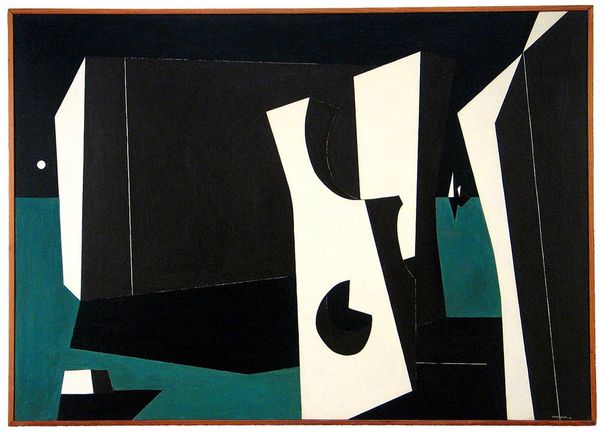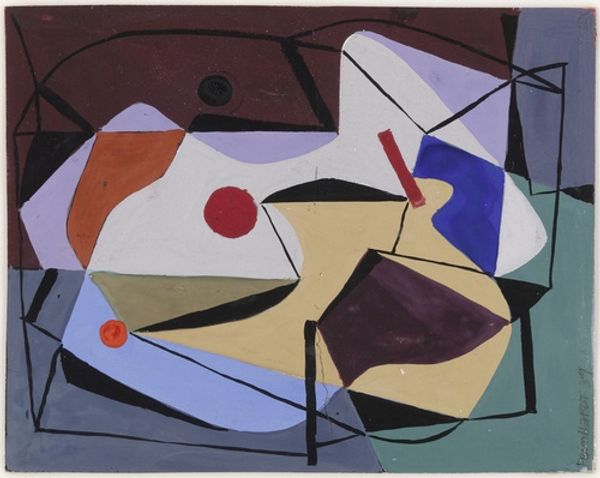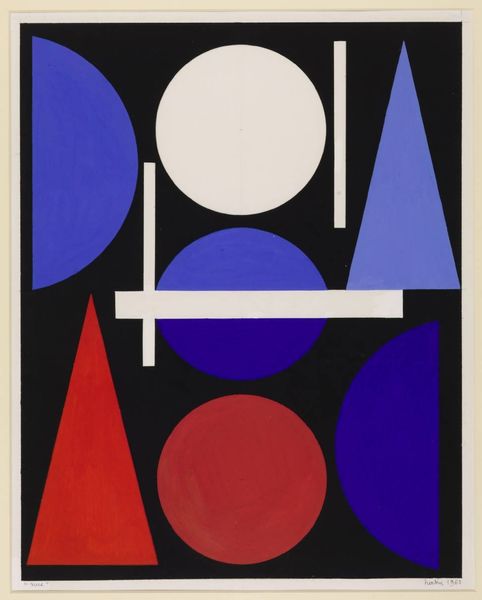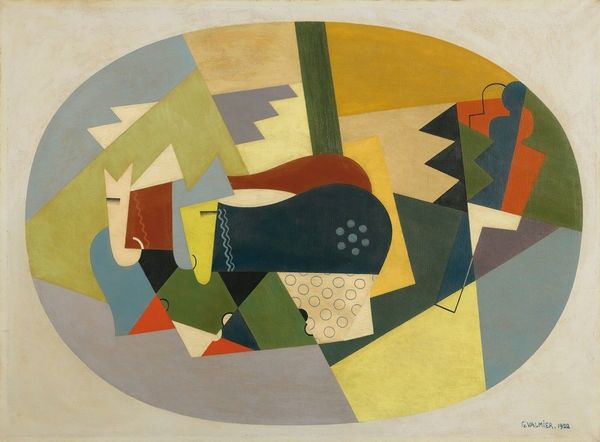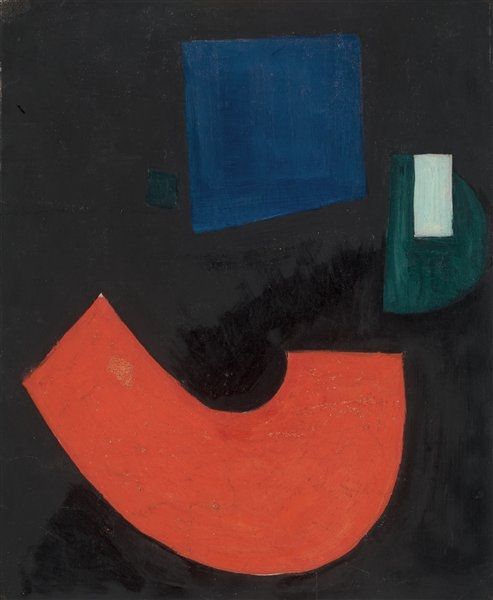
#
pop art-esque
#
circle
#
physical art
#
pop art
#
teenage art
#
strong focal point
#
tile art
#
acrylic on canvas
#
rectangle
#
spray can art
#
pop art-influence
#
teen art
Copyright: Public domain
Curator: L\u00e1szl\u00f3 Moholy-Nagy, a key figure in the Bauhaus movement, created this composition, "Am 7 (26)," in 1926. Editor: It looks like a solar eclipse viewed through a geometric dream. Is that splash of fiery orange a rising sun fighting through the darkness? Or maybe an active volcano as seen from an airplane? Curator: Moholy-Nagy aimed to explore the interplay between geometric forms and colors. He experimented with transparency and spatial relationships to create dynamic visual experiences, engaging the viewer's perception. How does this fit within the context of post-World War I aesthetics? It reflects a broader move to reconcile abstract vocabularies with utopian, humanist, social projects that saw technology and industry as pathways. Editor: You are completely right: Bauhaus folks always had utopian social ideals up their sleeve, even when painting things that seemed detached from practical issues. It's quite a stark and cool-tempered visual vocabulary on the one hand; it has quite a cerebral feel; yet at the same time it has this almost primordial impact like simple, elemental shapes viewed on an epic scale. Are we looking at the beginning of the universe? That central grey circle kind of resembles a massive cosmic egg with life struggling to break out of its shell. Curator: That reading resonates deeply, especially given Bauhaus’ mission to unite art and technology in service of humanity, aligning well with your primal imagery. The strategic employment of the orange plane acts to subvert the overall gloominess in the work. Considering his artistic trajectory, what's more likely: does it celebrate technological innovation, or does it hint at industrial society’s alienation of the human soul? Editor: Maybe a little bit of both? Art lives in paradox. The smooth surfaces, almost machine-like precision of forms, suggests the beauty he saw in industrial production. But that somber mood you're spot on about could indicate his concerns with technology’s shadow, its potential to overwhelm human connection, and its psychological costs. Thank you, "Am 7 (26)," for allowing our creative digressions! Curator: Precisely, and in his broader career he was skeptical, even critical. I’ve never thought about its link to volcanoes... I appreciate this shift from formal analysis toward the artist's deeper feelings on display. It’s essential to consider the many possibilities contained in such works as this one.
Comments
No comments
Be the first to comment and join the conversation on the ultimate creative platform.
